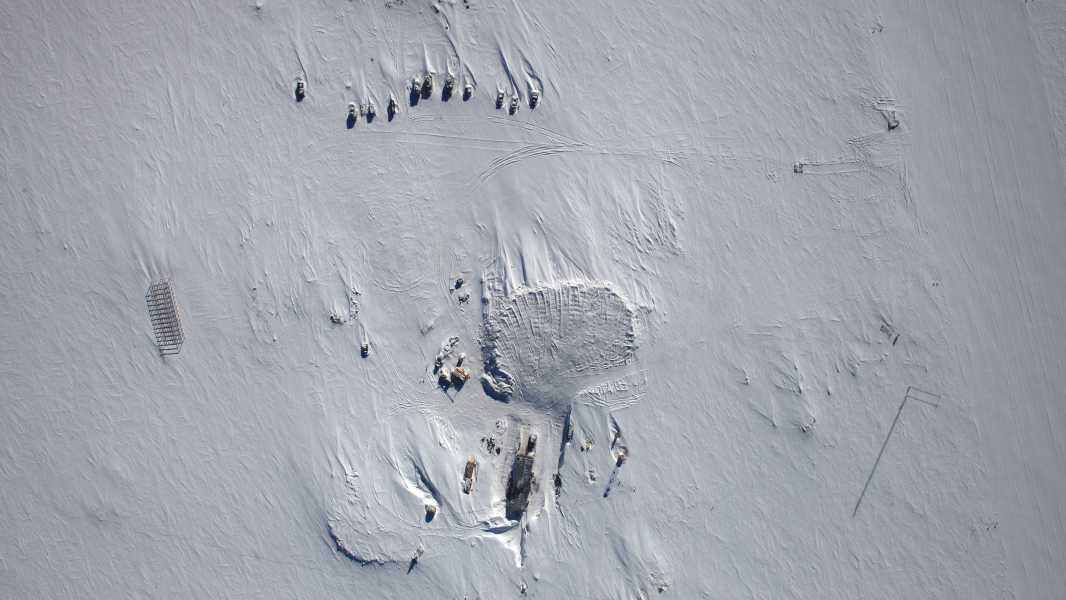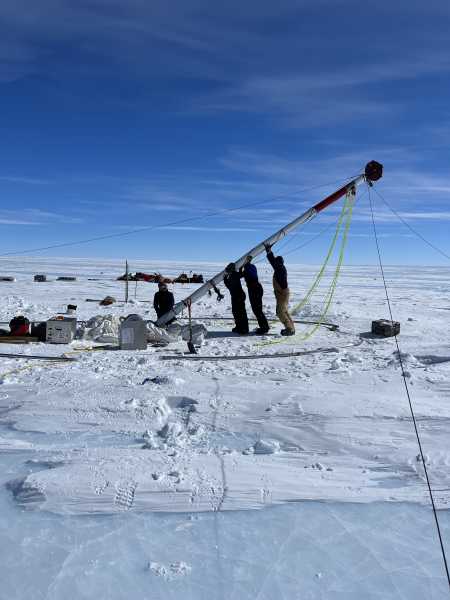
Lake Vostok is located near Russia's Vostok research station in Antarctica. (Photo courtesy of NASA Earth Observatory)
Lake Vostok is a huge body of water in Antarctica, comparable in size to Lake Ontario in North America. However, unlike Ontario, Lake Vostok is hidden under more than two miles (three kilometers) of wind-blown snow and ice.
Once a vast surface body of water, Lake Vostok has been buried for at least 15 million years, and some estimates suggest that its occlusion lasted much longer—20 million years or more. Because the lake was completely isolated from light and the atmosphere for so long, it became home to a unique ecosystem of extremophiles—organisms that have adapted to survive in harsh conditions.
Lake Vostok is about 150 miles (240 km) long and 30 miles (50 km) wide. It is the largest of more than 400 subglacial lakes scattered across Antarctica, where low levels of geothermal heat melt the base of the ice sheet.
The lake is adjacent to the Russian research station Vostok, which is located about 800 miles (1,300 km) from the South Pole. Although scientists have occupied the station since 1957, they were unaware of the lake's existence until the 1960s, when a Russian geographer and pilot first spotted the smooth, relatively flat surface of ice above it from the air.
In 1993, scientists discovered the lake using satellite radar technology that can penetrate ice. And in 2012, Vostok researchers finally succeeded in a multi-year effort to drill through the ice to the lake.

The organisms living in Lake Vostok may be able to survive thanks to chemicals contained in Antarctic rocks, which were closely studied by researchers in 2013.
Lake Vostok is about 0.6 miles (1 km) deep at its southern end and relatively shallow in its northern and southwestern reaches. Scientists have mapped the lake floor and found that the deep and shallow areas are separated by a ridge that they believe may be peppered with hydrothermal vents similar to those found in the Pacific Ocean.
The lake's only source of water is the ice sheet above it. The water's temperature hovers around 27 degrees Fahrenheit (minus 3 degrees Celsius), but it remains liquid due to the enormous upward pressure exerted by the ice sheet, which lowers the water's freezing point.
The lake's waters are home to countless species of microbes, including marine organisms, indicating that the body of water was once connected to
Sourse: www.livescience.com





